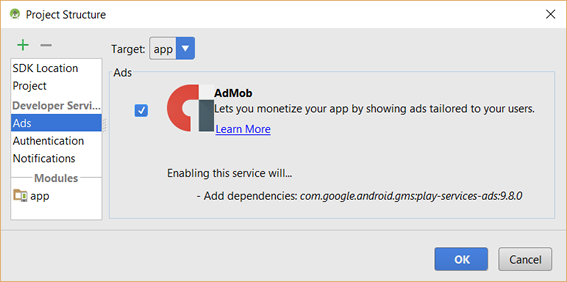

- PHONEGAP ANDROID STUDIO GRADLE HOW TO
- PHONEGAP ANDROID STUDIO GRADLE INSTALL
- PHONEGAP ANDROID STUDIO GRADLE UPDATE
- PHONEGAP ANDROID STUDIO GRADLE FOR ANDROID
These steps may vary depending on your installed version of Windows. Reload your terminal to see this change reflected or run the following command: $ source ~/.bash_profile
PHONEGAP ANDROID STUDIO GRADLE UPDATE
To update your PATH, add a line resembling the following (substitute the paths with your local Android SDK installation's location): export PATH=$:/Development/android-sdk/platform-tools:/Development/android-sdk/tools To set an environment variable, add a line that uses export like so (substitute the path with your local installation): export ANDROID_HOME=/Development/android-sdk/ On a Mac or Linux, you can use a text editor to create or modify the ~/.bash_profile file. It is also recommended that you add the Android SDK's tools and platform-tools directories to your PATH.Set the ANDROID_HOME environment variable to the location of your Android SDK installation.Set the JAVA_HOME environment variable to the location of your JDK installation.

The following variables should be updated: The CLI will attempt to set these variables for you, but in certain cases you may need to set them manually. Setting environment variablesĬordova's CLI tools require some environment variables to be set in order to function correctly. See Android's documentation on Installing SDK Packages for more details.

PHONEGAP ANDROID STUDIO GRADLE INSTALL
It is recommended that you install the highest SDK version that your version of cordova-android supports (see above). Adding SDK PackagesĪfter installing the Android SDK, you must also install the packages for whatever API level you wish to target. Otherwise, the Android Stand-alone SDK Tools are enough to build and deploy Android applications.ĭetailed installation instructions are available as part of installation links above.
PHONEGAP ANDROID STUDIO GRADLE FOR ANDROID
Proceed with Android Studio if you plan on developing new Cordova for Android plugins or using native tools to run and debug the Android platform. Install the Android Stand-alone SDK Tools or Android Studio. When installing on Windows you also need to set JAVA_HOME Environment Variable according to your JDK installation path (see Setting Environment Variables) Android SDK Install Java Development Kit (JDK) 7 or later. Installing the Requirements Java Development Kit (JDK) To determine what version of Cordova's Android package is installed in your Cordova project, run the command cordova platform ls in the directory that holds your project.Īs a general rule, Android versions become unsupported by Cordova as they dip below 5% on Google's distribution dashboard. Please note that the versions listed here are for Cordova's Android package, cordova-android, and not for the Cordova CLI. The supported Android API-Levels for the past few cordova-android releases can be found in this table: cordova-android Version Cordova's latest Android package supports up to Android API-Level 23. See the Android SDK's System Requirements. Requirements and SupportĬordova for Android requires the Android SDK which can be installed on OS X, Linux or Windows. For details on the CLI, see Cordova CLI Reference. For a comparison of the two development paths, see the Overview. You need to install the Android SDK regardless of whether you want to use these platform-centered shell tools or cross-platform Cordova CLI for development.
PHONEGAP ANDROID STUDIO GRADLE HOW TO
This guide shows how to set up your SDK environment to deploy Cordova apps for Android devices, and how to optionally use Android-centered command-line tools in your development workflow.


 0 kommentar(er)
0 kommentar(er)
